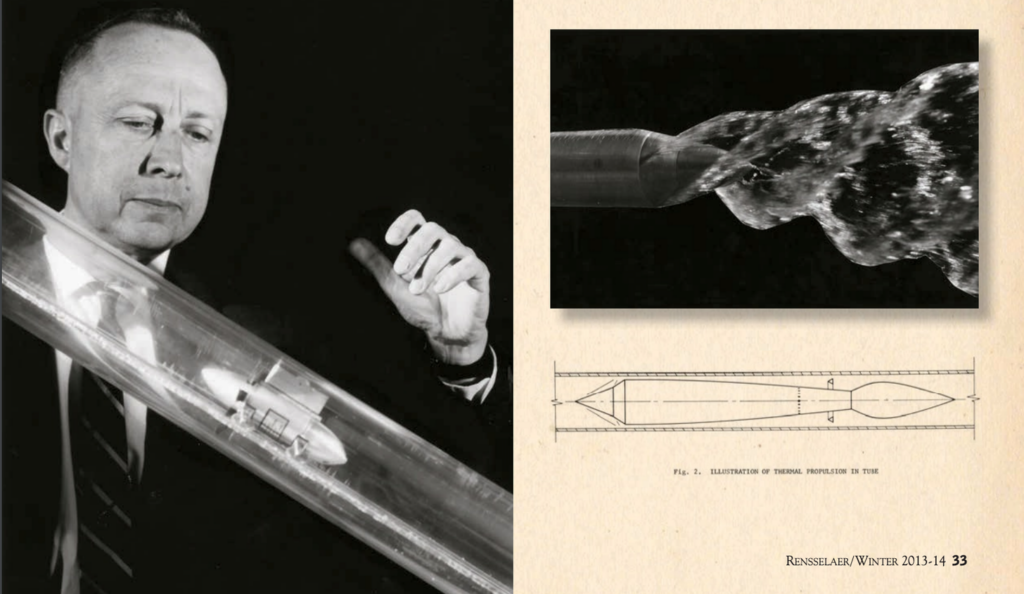Solutions in Search of Problems
Not too long ago I wrote a nifty little piece called Why AI Startups in Search of the Killer App are Backwards. In it, I describe the classic scenario of technology solutions in search of problems, and how that reflects an anti-pattern of most successful startups.
Last week, Daniel Faggella posted “Beachhead Strategy for New #AI Products – Competing with Established Players” to LinkedIn which again highlights this as a common pattern of searching for product/market-fit by AI startups. The second step is the “we do everything” phase where they literally have specific AI IP and are searching for customers and use cases to make it valuable.
It is clear that AI companies are following the approach of trying to find a problem that fits the particulars of their solution. If this is such a bad thing then why are so many VC backed companies doing it?
Let’s first look at the prevailing wisdom…
Prevailing Wisdom
Go to a product management course or study startup best practices today and you will learn how to develop a product and business iteratively until initial product/market-fit is achieved.
Eric Reis wrote a foundational book to this thinking entitled The Lean Startup. It was built on the prior teachings of Steve Blank and Alex Osterwalder with additional perspectives from his first-hand experience in startups.
A central concept is the Build-Measure-Learn loop of iterative development toward discovering a valuable solution to specific problems a given customer segment has. Generally, the thinking is that one must first identify a problem of a specific customer segment, then search for the solution.
“Rule No. 1: There Are No Facts Inside Your Building, So Get Outside.” Steve Blank, The Startup Owner’s Manual: The Step-By-Step Guide for Building a Great Company
More recently, the focus for the product management community has been on driving desired outcomes. This concept is most effectively articulated in Joshua Seiden’s excellent book Outcomes over Outputs. He describes outcomes as a change in human behavior that drives business results. As such, the Build-Measure-Learn loop should be leveraged to figure out the minimal product features that can impact human behavior in a manner that produces desired results.
Example: Encourage the user to stay engaged longer to enable more ad time exposure.
In none of these practices, is it advised to start with pre-existing intellectual property (aka a solution) and search for the use case it may apply to. Per this prevailing wisdom, technology may enable or inform potential solutions, but it is not the starting point of the journey.
Promising Technologies of Yesterday
The truth is that sometimes there is great promise in specific technology and everyone believes it is just a matter of time before it can be commercially viable.

A few notable examples include:
-
Steam Engines: An ancient Greek inventor demonstrated how steam could be used to drive rotary motion. In the 17th century, inventors began to actively search for ways to further develop and leverage this technology. By the early 1700s, there were applications from removing mine water to supplying water in towns. Late in the century, the Industrial Revolution was powered by further advances in this critical technology.
-
Silicon Semiconductors: Silicon Valley is named for the silicon used in semiconductors after it replaced the previously dominant use of germanium. When the MOS transistor was invented in the 1950’s, enabling miniaturization and mass-production, an investment race took hold working to find commercial applications — FM radios, TVs, and eventually as the foundation of the computing industry.
-
Personal Computers: Promising technology existed with limited utility until the VisiCalc spreadsheet program, followed by Lotus 1-2-3 and Excel. The spreadsheet “killer app” was found to drive the first wave of wider business adoption. Subsequent computing technology platforms have sought their own “killer app” to replicate this rapid adoption growth.
On the flip side, some technologies have been invented and have had significant investments but never successfully commercialized:

When does solution-first make sense?
Researchers and inventors across many fields are constantly identifying novel solutions, techniques, and technologies that do not have an immediate commercial application. The US issued 333,530 patents in 2019 alone. While difficult to know exact utilization, only a small percentage are likely ever put to direct commercial use.
Many of the technologies described previously existed for decades before commercially viable products leveraged them. However, the scale of commercial opportunities these technological advances have unlocked was immeasurable.
Therefore, while the risk of viability and timing may be substantial, the reward for getting it right has been enormous.
We contrast this with the prevailing wisdom approach to always start with the customer and their needs — merely informed by available technologies in designing solutions. Focusing on current customer need will dramatically reduce your timing risk. Your main challenge is finding a technically feasible solution those customers are willing to pay for. This approach will result in greater odds of commercial success but may limit the scale of most opportunities.
According to Malcolm Gladwell’s Outliers, this may be where timing and chance come into play. Can you take this risk when building a new product, based on as yet unproven technology?
Promising Technologies of Today
This discussion would be incomplete without considering some of the promising technologies of today that could unlock substantial future market value – as the steam engine once did. Here are 14 such technologies:
-
Autonomous Driving
-
Biologic Therapy
-
Internet of Things
-
Artificial Intelligence
-
Computer Vision
-
Blockchain
-
Virtual & Augmented Reality
-
Fusion Power
-
Quantum Computing
-
Drones
-
Robotics
-
3D Printing
-
Hyperloop
-
Electric Vehicles
Many of these already exist but have yet to make it to mainstream commercial success. Others have to overcome remaining technical challenges before significant solutions can leverage them.
History has clearly taught us that some ideas are so compelling in their potential that it is worth the effort to discover the “problem” worth solving. This appears to be a higher risk, higher reward model of building products and companies. Thankfully, there are entrepreneurs and investors willing to take these risks whether for fame, fortune, or because they are driven by the desire to change the world.
